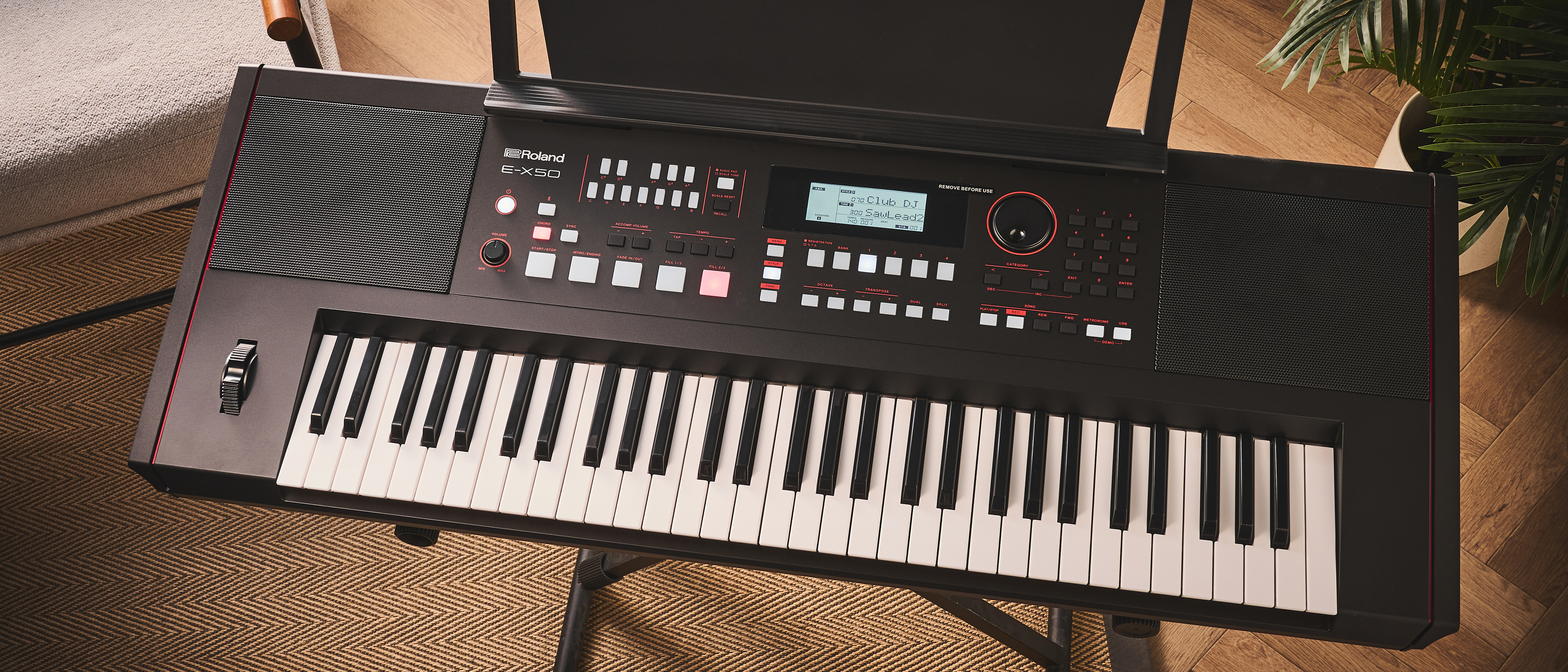MusicRadar Verdict
The Roland E-X50 is a good choice for beginners, offering creative features, strong connectivity, and a sturdy build. However, the keys feel a little stiff, and some sounds seem outdated for the price.
Pros
- +
Solid, sturdy build quality
- +
Easy switching between scales and quarter-tone playing
- +
Punchy built-in speakers
- +
256-note polyphony
- +
USB, memory stick, and Bluetooth connectivity
- +
Assignable pads and mic/guitar input with effects
Cons
- -
Stiff key action with shallow travel, challenging for beginners
- -
Some of the sounds feel one-dimensional and dated
- -
Slightly bulky and heavy
MusicRadar's got your back
What is it?
The Roland E-X50 is the latest in Roland’s E-series of arranger keyboards, building on the legacy of the original E-20, which launched over thirty years ago as one of the first “professional” arranger keyboards. Advancements in digital piano technology, changing consumer preferences, and increased demand for versatile keyboards have transformed electronic musical instruments. Designed for beginners and hobbyists, the E-X50 continues the E-series legacy with a familiar interface and features that will feel comfortable to players used to classic Roland arranger keyboards.
The E-X50 features an elegant matte-black design, with top-mounted speakers that combine woofers, tweeters, and a bass-reflex port for punchy yet crystal-clear sound. The E-X50 comes with a standard 61-key synth-style keyboard, with velocity-sensitive keys and a glossy finish. The velocity response can be adjusted, with three different curves as well as a fixed option for consistent key sensitivity.
What distinguishes an arranger keyboard like the Roland E-X50 from a traditional digital piano is its expansive tone library and built-in accompaniment. The E-X50 provides 433 instrument sounds, including pianos, organs, strings, brass, world instruments, synths, and drums, plus an additional 256 GM2 sounds, ensuring full General MIDI 2 compatibility. This means songs created on other GM2-compatible devices will play back accurately on the E-X50. Altogether, you have 689 sounds at your disposal, combining Roland’s curated tones with the GM2 library. The instrument also includes 9 drum sets.
The Roland E-X50 includes 300 built-in automatic accompaniment patterns – called 'Preset Styles' by Roland. Each provides a full backing band (drums, bass, chords, and more) that follows chords played with the left hand and spans a wide range of genres. The keyboard supports user-defined tone and style combinations for fast, customised performances.
The E-X50 offers a variety of effects, including 11 types of reverb, 12 types of chorus, and 6 EQ presets. You can use these effects on the keyboard’s sounds or on external sources connected through the rear input for a microphone or instrument.
A standout feature of the Roland E-X50 is its performance pads. You can assign these pads to trigger quarter-tone scales, which helps when playing non-Western music. They can also trigger samples you import with a USB stick, giving you more options for live performances.
The Roland E-X50 allows streaming via Bluetooth or cable connection for playing along with backing tracks, practising with songs from your device, or integrating external audio into live performances.
Want all the hottest music and gear news, reviews, deals, features and more, direct to your inbox? Sign up here.
Build quality
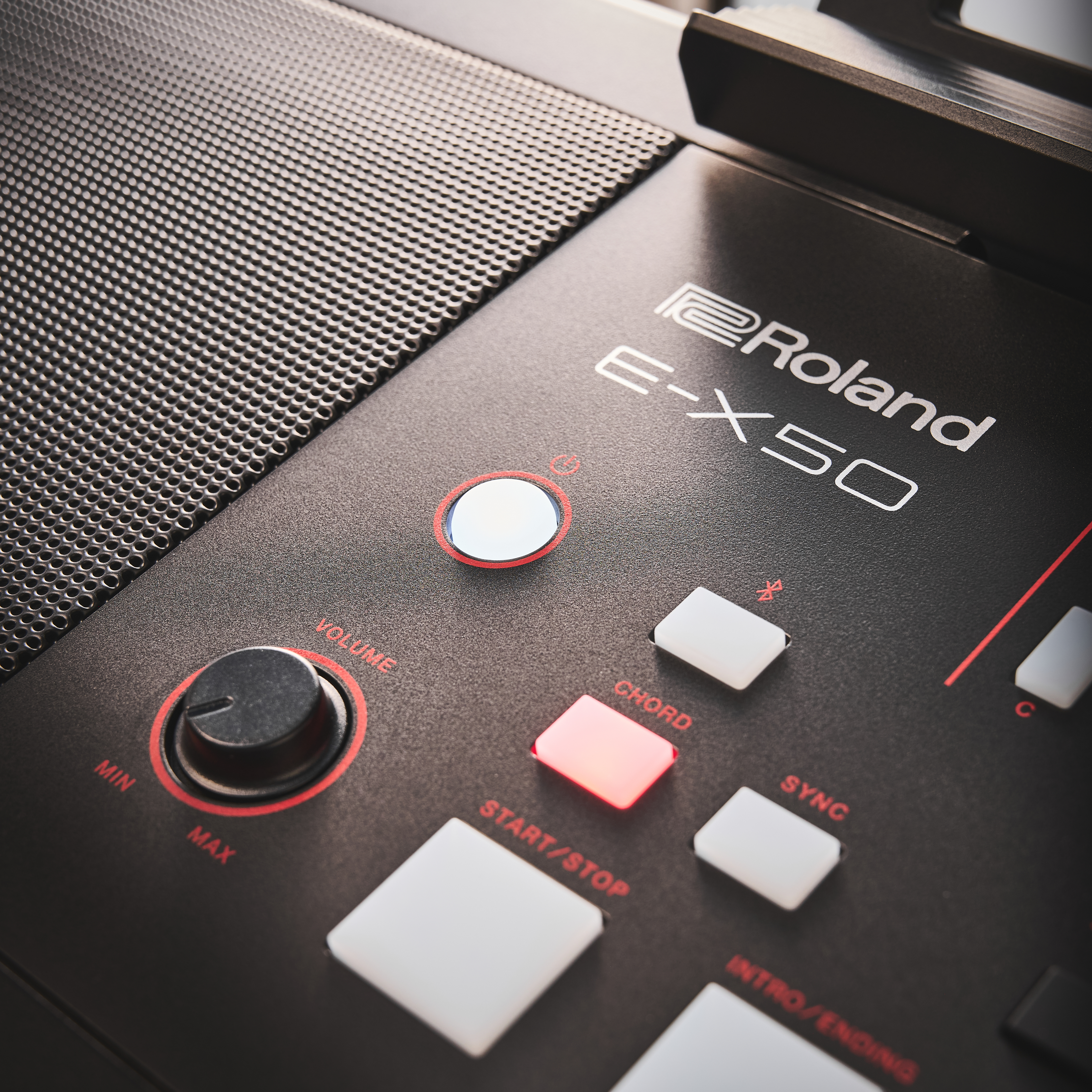
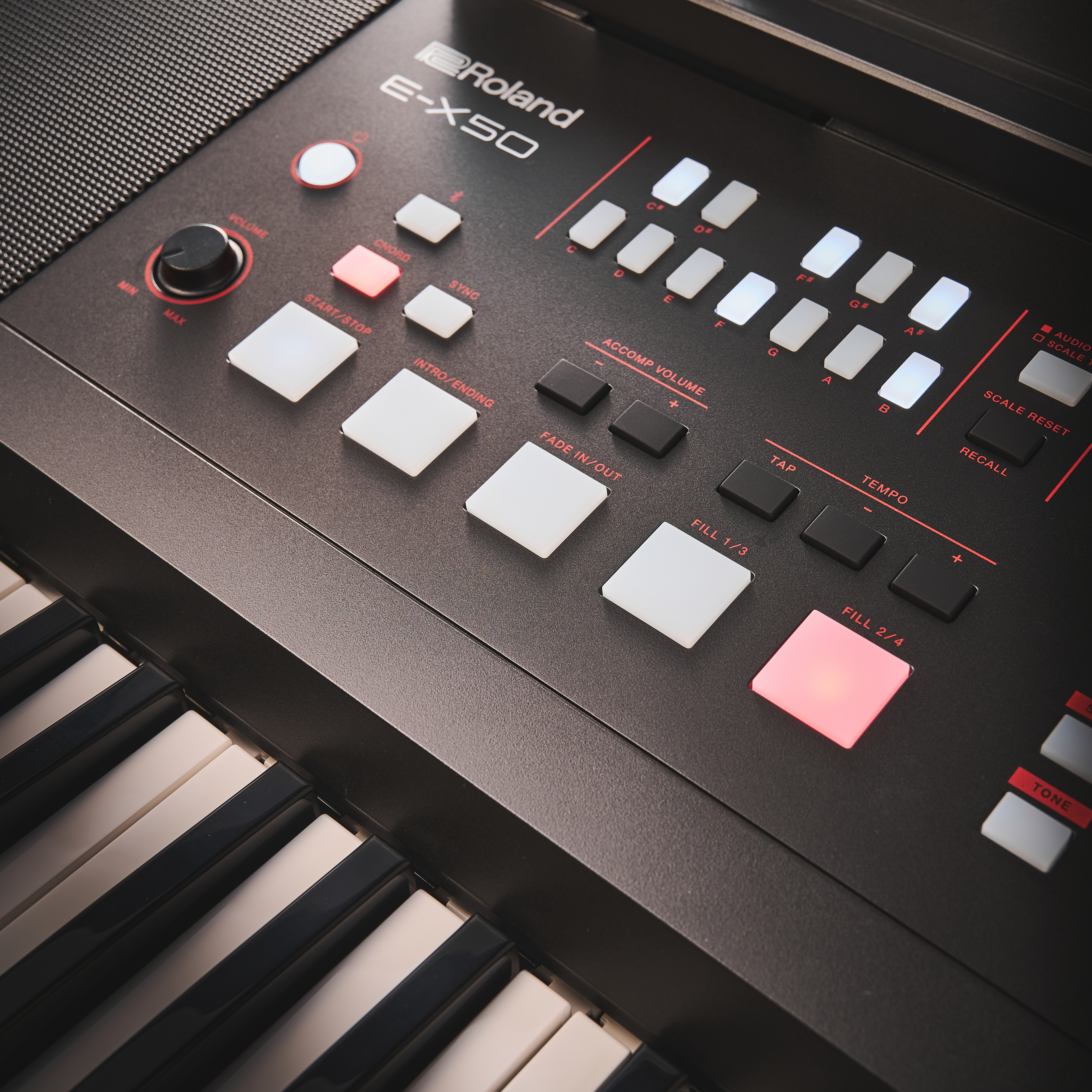
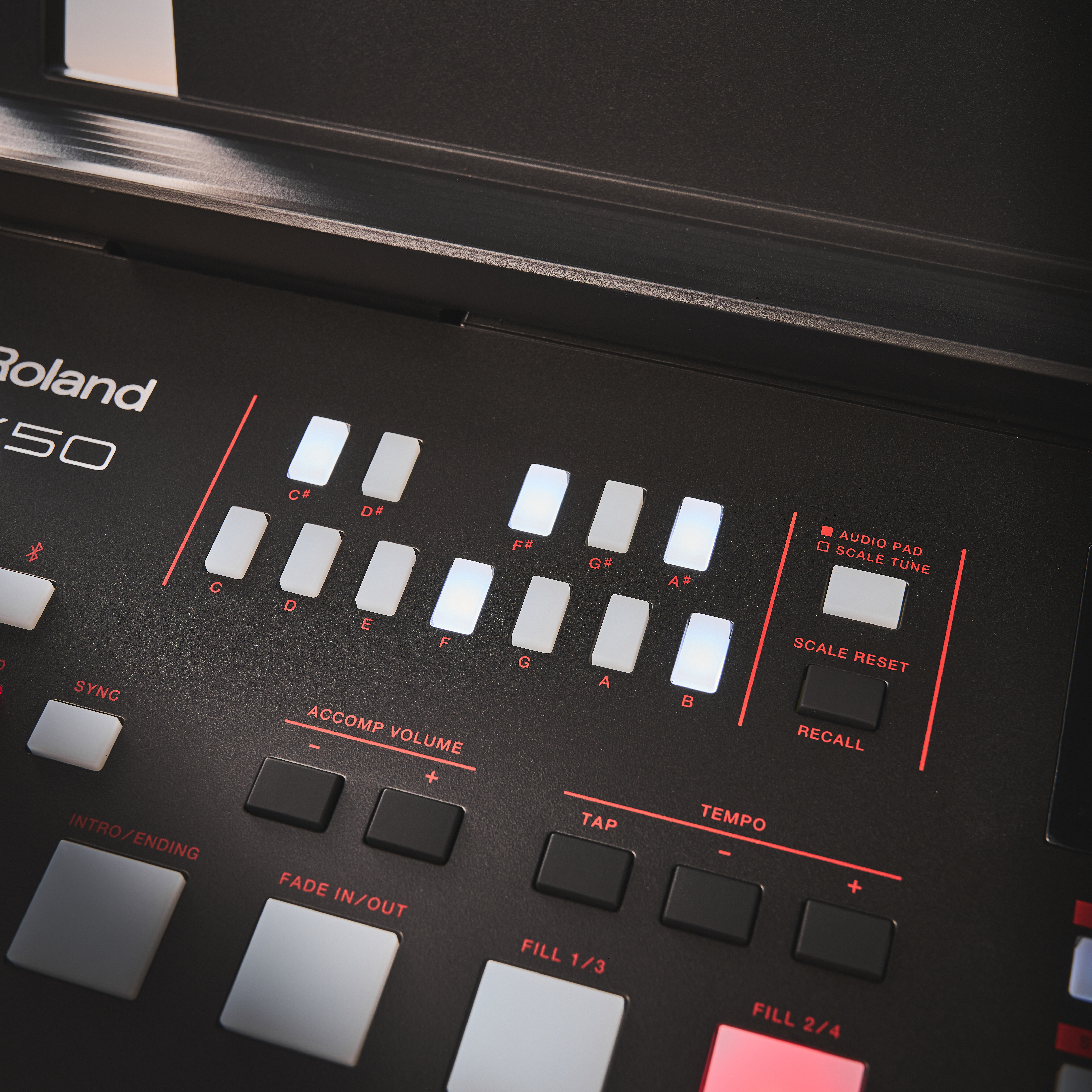
Arranger keyboards are hard to define these days, positioned somewhere between digital pianos and professional stage keyboards. The key question is whether they strike the right balance of features, feel, and value.
The Roland E-X50 looks sleek and feels solid, living up to Roland’s reputation for quality. Even though it’s affordable, the build stands out. Its sharp edges and matte finish give it a classic look that I very much enjoy. Now, while the E-X50 is larger and heavier than some of its rivals, I'd argue that its layout is more spacious and easier to use - a definite plus for beginners, for sure.
At the back of the instrument, you’ll find a jack input, allowing you to connect a microphone or guitar directly to it and use Roland’s built-in effects for added versatility and fun. The instrument also features assignable pads that can trigger your own imported samples, providing greater flexibility and allowing for truly personalised sounds and effects.
The E-X50 is also well-connected, offering USB, memory stick, and Bluetooth options that facilitate streaming and triggering samples. For instance, you can stream a Spotify backing track via Bluetooth while triggering custom samples from the assignable pads. This setup enhances performance dynamics, providing a seamless transition between streaming and live play, tailored to your creative needs.
Playability
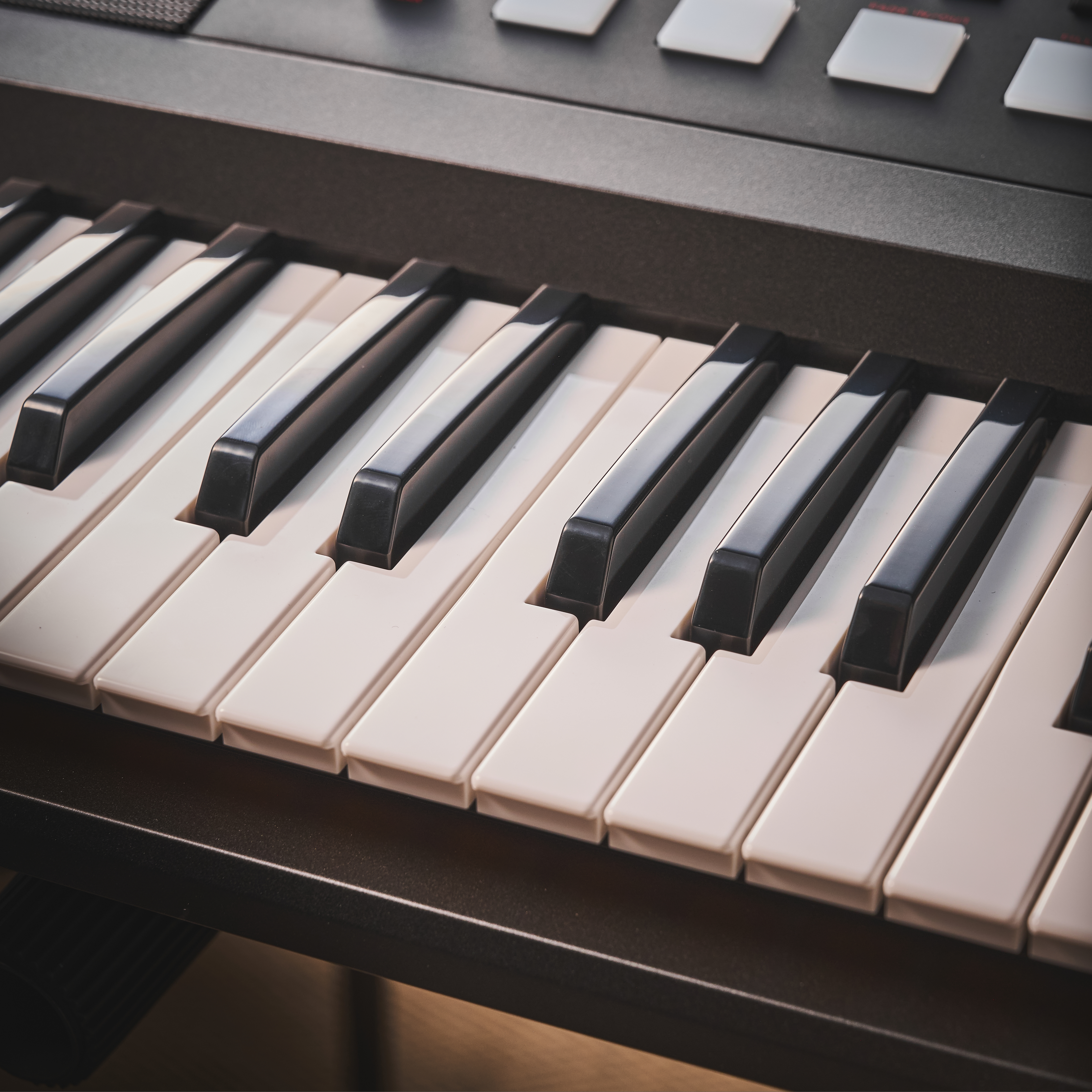
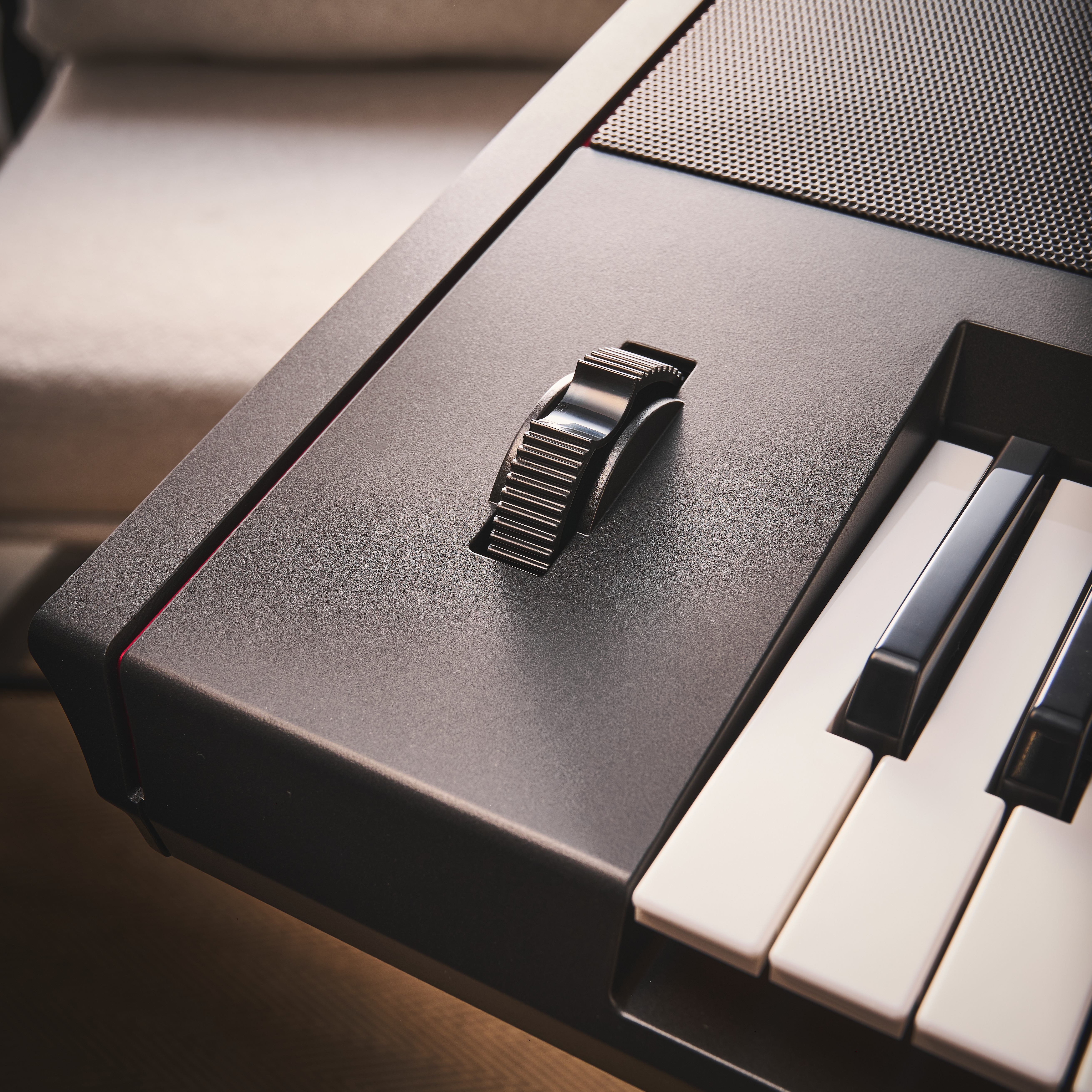
The keyboard on the E-X50 feels solid, but the keys are quite stiff and don’t move very far. This can make it harder for beginners, as it takes more finger control and might feel tiring after a while. It’s also missing aftertouch, a feature found on many modern synths and keyboards, which some advanced players might miss.
On the plus side, the Roland E-X50 offers 256-note polyphony, which offers a substantial advantage over its competitors, ensuring that even the most intricate performances are delivered with full clarity and without note dropout.
Sounds
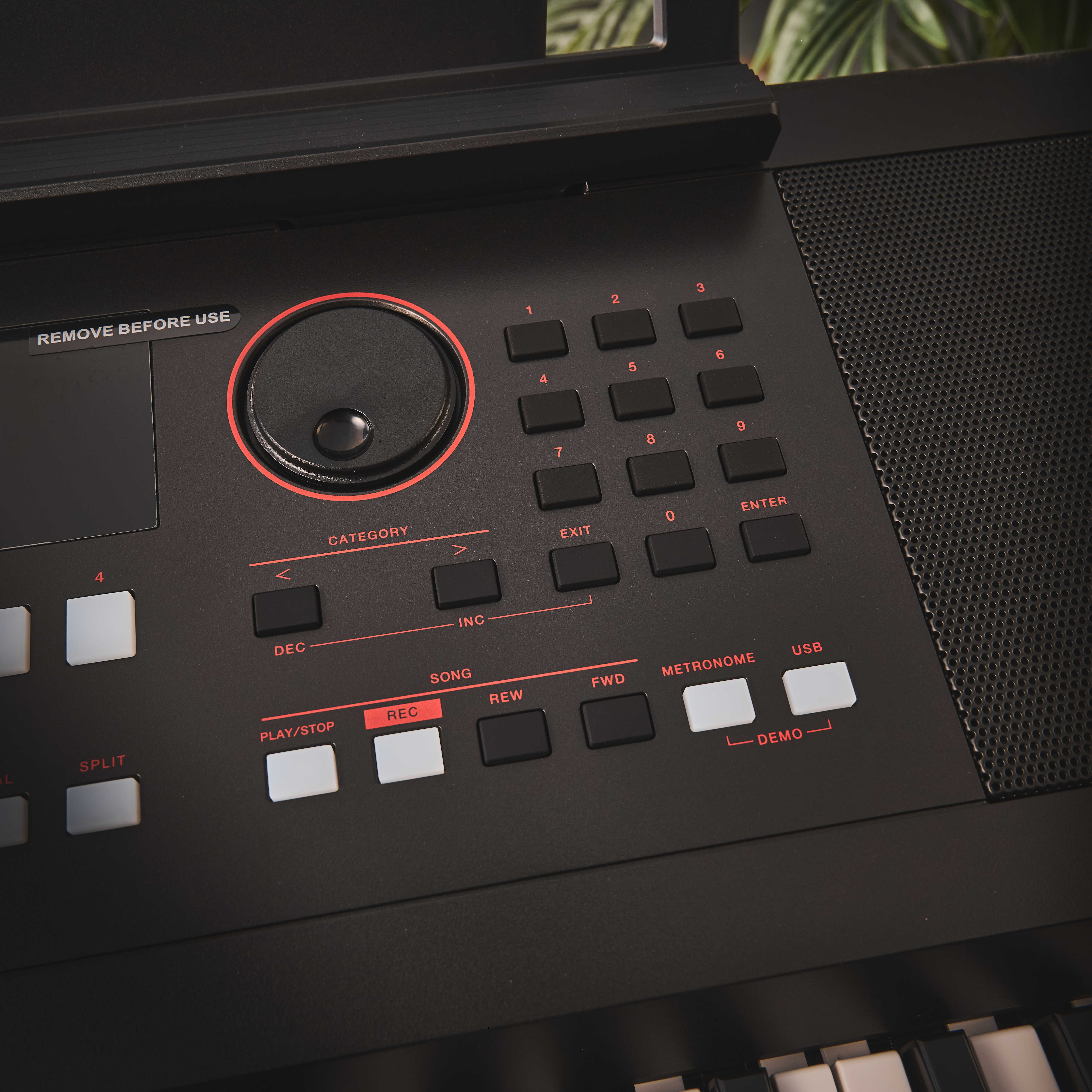
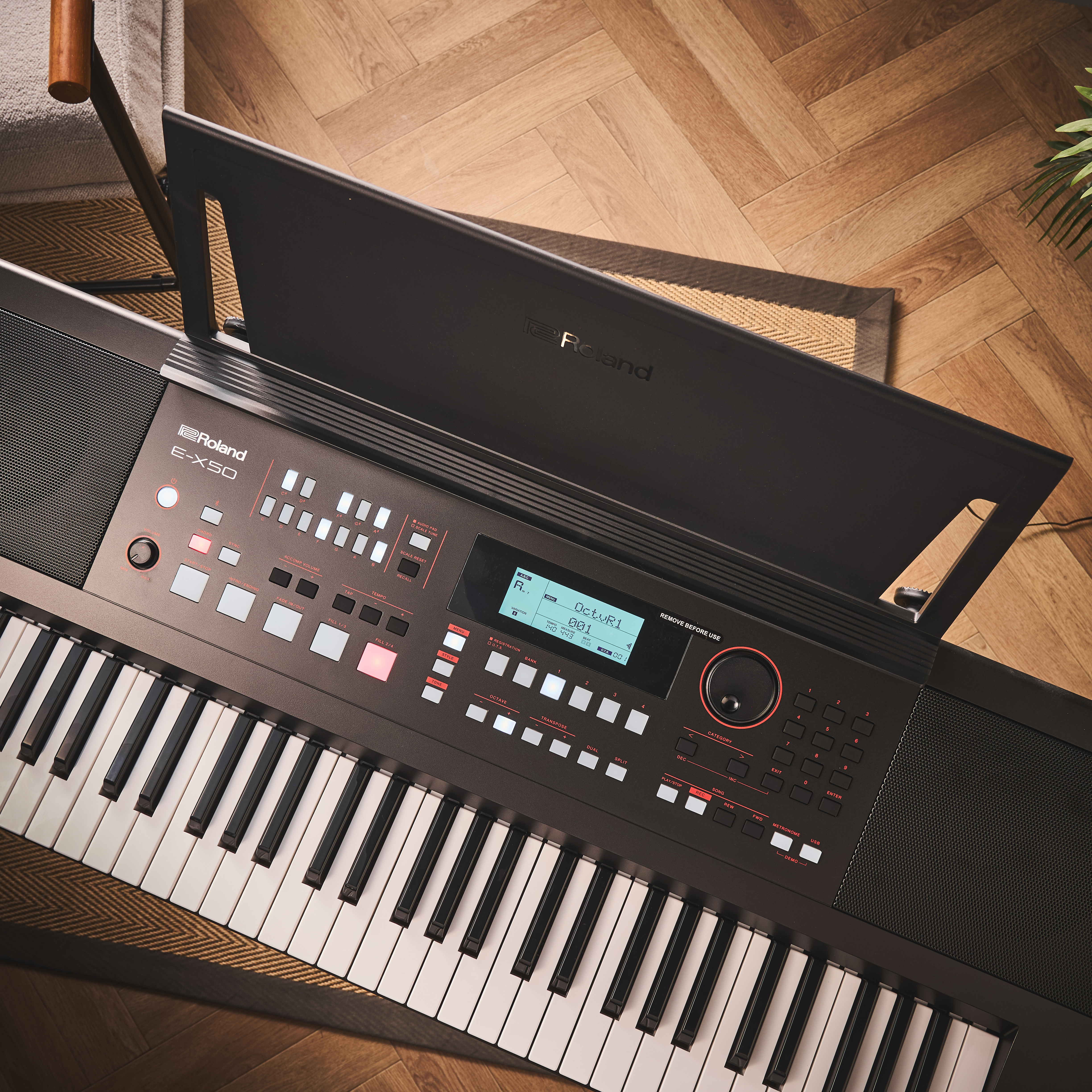
Okay, let's now move to the sound of the Roland EX50. For me, a standout feature of the E-X50 is its speaker system, which delivers a punchy, lively sound, making it enjoyable to play even without headphones.
Arranger keyboards are great for creativity, thanks to their many sounds and accompaniment styles. The E-X50 offers a wide range, including interesting world instruments from Southeast Asia. The core piano sounds have a rich tone with a surprising amount of depth. The E. Piano voices are also very colourful, and the brass and woodwind patches are brought to life by a warm, organic vibrato.
That said, there aren’t many improvements over older models. The string voices, for instance, can feel reminiscent of ’90s GM patches when contrasted with Roland’s higher-end instruments that use SuperNATURAL technology. Many other sounds in the E-X50 feel overly synthetic, and the accompaniments will seem dated to many players.
The E-X50 offers a wide range of effects, including reverbs, EQs, choruses, and delays. However, some effects are already embedded in certain voices and cannot be edited individually, which could be important to consider for those seeking maximum flexibility in sound customisation.
And we saved perhaps the best feature of the E-X50 for last. The keyboard makes it remarkably easy to switch between different scales and tunings, opening the door to quarter-tone playing. This feature is particularly exciting for musicians interested in exploring music beyond the standard Western system, adding a new dimension to performance and creativity.
Verdict
Does the Roland E-X50 live up to its legendary predecessors as a safe choice as a beginner keyboard, or a fun, creative instrument for those seeking versatility and a one-man-band experience? As expected from a Roland E-series arranger keyboard, it offers some impressive features, but there are important considerations before making a purchase.
While it benefits from Roland’s renowned build quality and expertise, the E-X50 may fall short in the sound department for many pianists. Still, the E-X50 has some strong points. The built-in speakers produce sound that is full and powerful, Bluetooth makes streaming simple, and features like quarter-tone scales and assignable pads provide you with more creative options. The keyboard also feels sturdy and well-made.
MusicRadar verdict: The Roland E-X50 is a good choice for beginners, offering creative features, strong connectivity, and a sturdy build. However, the keys feel stiff, and some sounds seem outdated for the price.
Hands-on demos
RolandChannel
Kraft Music
Georgy Hesky
Specifications
- Type: Arranger keyboard
- Maximum Polyphony: 256 voices
- Tones: 433 main tones + 256 GM2 tones
- Drum Sets: 9 main + 9 GM2
- Effects: Equaliser: 6 types, Reverb: 11 types, Chorus: 12 types
- Keys: 61 (with velocity sensitivity)
- Touch Sensitivity: 3 levels + fixed touch
- Speakers: 12 cm (4-3/4 inches) × 2
- Tweeters: 3 cm (1-1/4 inch) × 2
- Rated Power Output: 10 W × 2
- Styles: 300 styles
- Headphones: Stereo 1/4-inch
- Output: 1/4-inch
- Pedal Jack: 1/4-inch
- USB: USB B type
- AC Adaptor: Included
- Power Consumption: 30 W
- Contact: Roland
Quentin is a composer specialising in writing for contemporary dance, theatre and film. He is also a classically trained pianist and multi-instrumentalist. One half of trip-hop duo Moon Thrills, Quentin also teaches songwriting to the undergraduate students at LCCM in London. He has a newly discovered passion for sound synthesis and finds it a great way to explore new and exciting ways to develop his music.
You must confirm your public display name before commenting
Please logout and then login again, you will then be prompted to enter your display name.
